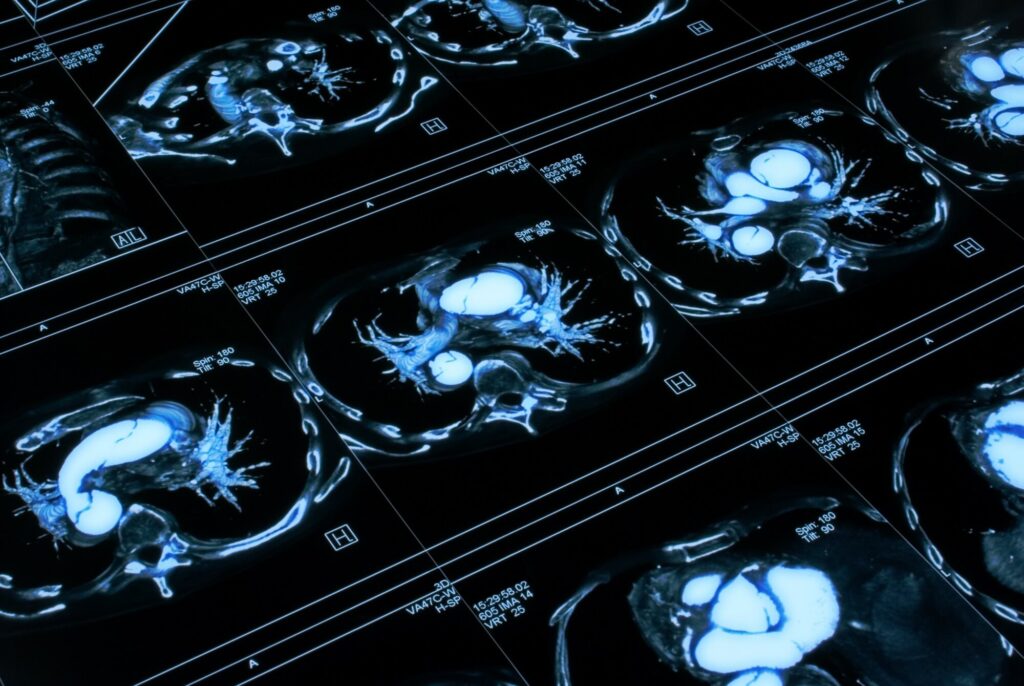When a stroke patient arrives at an emergency room, every second counts. Each passing minute kills 1.9 million neurons.
Yet traditional PACS cloud solution systems can introduce precious delays that healthcare providers simply can’t afford.
Edge computing is changing this reality by bringing processing power directly to where medical images are created.
The Latency Problem in Medical Imaging
Remote diagnostic imaging faces a serious timing issue. Some studies can reach several gigabytes in size, further exacerbating access latency issues in PACS and cloud-PACS environments.
When you send massive CT or MRI files to distant cloud servers for processing, the round-trip journey creates delays that can impact patient care.
Healthcare organizations now generate a staggering 30% of the world’s data volume. Each patient contributes roughly 80 megabytes of data annually through imaging and EMR data alone.
This data explosion makes latency even more problematic as networks become congested with medical information.
How Edge Computing Works for Medical Imaging
Edge computing solves the latency problem by processing data where it’s generated—right at the imaging device or nearby local servers.
Instead of sending your MRI scan data on a long journey to a remote data center, the analysis happens locally.
High-resolution imaging devices, such as MRI and CT scanners, generate massive amounts of data that require substantial computational power for analysis.
By leveraging edge computing, these devices can process and analyze images locally, accelerating diagnosis and enabling healthcare providers to make quicker, more informed decisions.
The difference is dramatic. Traditional cloud processing might take 30-60 seconds or more for complex imaging analysis. Edge processing can deliver results in under 10 seconds, and sometimes in milliseconds for critical alerts.
Real Performance Numbers
The speed improvements from edge computing in medical imaging are significant. Here’s what the data shows:
| Processing Type | Typical Latency | Use Case |
| Cloud Processing | 30-60+ seconds | Non-urgent scans |
| Edge Processing | 5-15 seconds | Standard diagnostics |
| Edge AI | 1-5 seconds | Critical alerts |
Ultra-low latency processing: Throughput and real-time insights for tasks such as hand-eye coordination, or alerts about where critical organs are during a procedure, are essential for ensuring safer surgeries. Processing data at the edge provides near-instantaneous feedback.
Why Edge Computing Reduces Latency
The physics are simple—distance matters. Edge computing slashes latency by cutting down the distance data travels, which is a game-changer for applications needing real-time responses.
When your imaging data doesn’t need to travel thousands of miles to a data center and back, everything happens faster.
In computer vision, sending video data to the cloud for inference may cause more delays from the network due to queuing and propagation, and it can’t meet the strict end-to-end low-latency requirements that real-time applications need.
The same principle applies to medical imaging—local processing eliminates network bottlenecks.
Benefits Beyond Speed
Edge computing doesn’t just make imaging faster. It creates several advantages for healthcare providers:
Reliability During Outages: Processing data onsite through edge devices allows healthcare institutions to keep their processes moving without disruption, even during network outages. Your imaging systems continue working even if internet connectivity fails.
Enhanced Security: Keeping data within the device and inference at the edge means that patient health information (PHI) stays secure and is less vulnerable to many attacks and data breaches. Sensitive medical images don’t travel across public networks.
Reduced Bandwidth Costs: You’re not constantly uploading gigabytes of imaging data to the cloud. Only processed results and critical alerts need to be transmitted, cutting bandwidth usage by 70-90%.
Real-World Applications
Edge computing is already transforming medical imaging in several ways:
Emergency Medicine: In emergency situations where time is of the essence, edge processing enables immediate analysis of CT scans for stroke detection or trauma assessment.
Surgical Applications: AI-augmented medical devices bring surgeons data-driven insights on demand. These insights can help make procedures as minimally invasive as possible and improve patient recovery times.
Rural Healthcare: Remote clinics can perform sophisticated imaging analysis without reliable high-speed internet connections to major medical centers.

The Technology Behind Edge Computing Medical Imaging
Modern edge computing for medical imaging relies on powerful local processors.
NVIDIA RTX™ enabled GPUs include Tensor Cores optimized for AI (deep learning) and RT Cores designed for real-time photorealistic 3D visualization.
These processors can handle complex AI algorithms that were once only possible in large data centers.
Real-Time Image Processing – Reduce latency and enhance imaging speed for immediate clinical insights. AI-Powered Diagnostics – Utilize deep learning and edge AI to detect abnormalities faster and with greater accuracy.
Challenges and Considerations
Edge computing isn’t perfect. The main limitations include:
Hardware Costs: High-performance edge devices require significant upfront investment compared to basic terminals that rely on cloud processing.
Maintenance Complexity: You need local IT expertise to maintain edge computing equipment at each imaging location.
Processing Power Limits: Compared to centralised cloud servers, edge devices often have limited resources, including processing power, memory, and storage space. Some complex analyses still need cloud resources.
The Future Impact
IDC projects that 40% of providers will shift critical workloads to the edge by 2026. This shift represents a fundamental change in how medical imaging works.
Instead of centralized processing models, healthcare is moving toward distributed intelligence that puts processing power where patient care happens.










